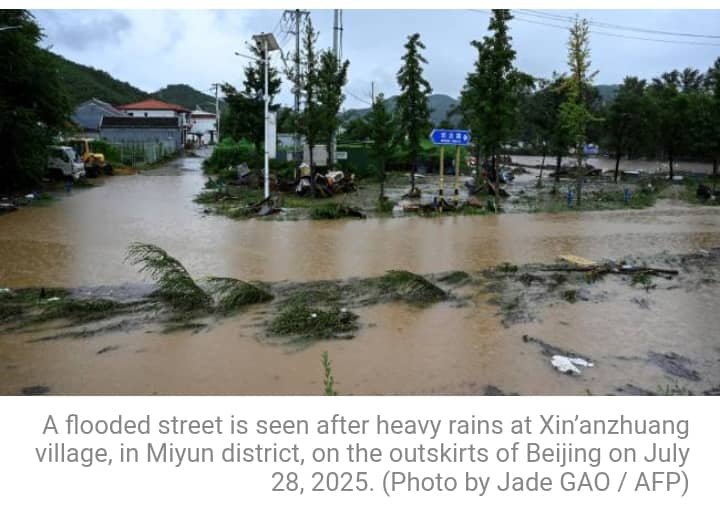
By Ameh Gabriel
Beijing, China – Devastating floods triggered by relentless torrential rains have left at least four people dead and forced the evacuation of thousands across several provinces in northern China, as emergency responders continue to battle rising water levels and landslides.
The worst-hit regions include parts of Hebei, Shanxi, and Inner Mongolia, where rivers have overflowed, roads have been submerged, and homes swept away. Authorities say the rainfall some of the heaviest seen in recent years has overwhelmed drainage systems and infrastructure, sparking fears of more damage if the downpour persists.
China’s Ministry of Emergency Management confirmed the casualties and displacement figures on Sunday, stating that rescue operations are ongoing. Local governments have mobilized thousands of firefighters, soldiers, and medical personnel to assist stranded residents and secure critical infrastructure.
In Hebei Province, officials reported over 8,000 residents evacuated from low-lying areas, while dozens of villages remain inaccessible due to collapsed bridges and impassable roads. In neighboring Shanxi, more than 20,000 hectares of farmland have been flooded, raising concerns about food supply disruptions in the region.
China’s National Meteorological Center has issued red alerts the highest warning level for severe rainstorms in affected areas, forecasting continued downpours and potential flash floods in the coming days.
State media showed dramatic footage of rescue workers wading through chest-high waters, carrying children and the elderly to safety, while helicopters dropped relief supplies to isolated communities.
Authorities have also warned of secondary disasters such as mudslides and building collapses, urging residents in vulnerable zones to relocate to temporary shelters set up in schools and sports centers.
As climate change continues to intensify weather patterns globally, China has seen a rise in the frequency and severity of extreme weather events, prompting calls for increased investment in urban drainage systems, early warning technologies, and climate-resilient infrastructure.
Officials say efforts are underway to assess the full extent of the damage, with relief supplies and reconstruction support being mobilized from central and provincial authorities.







